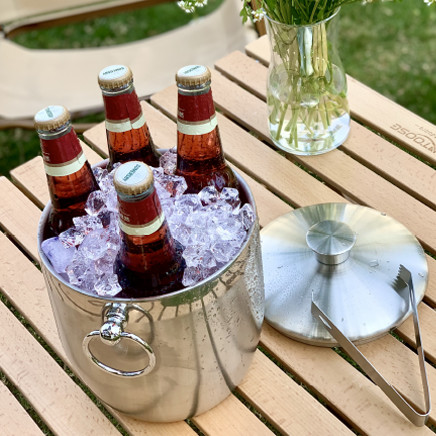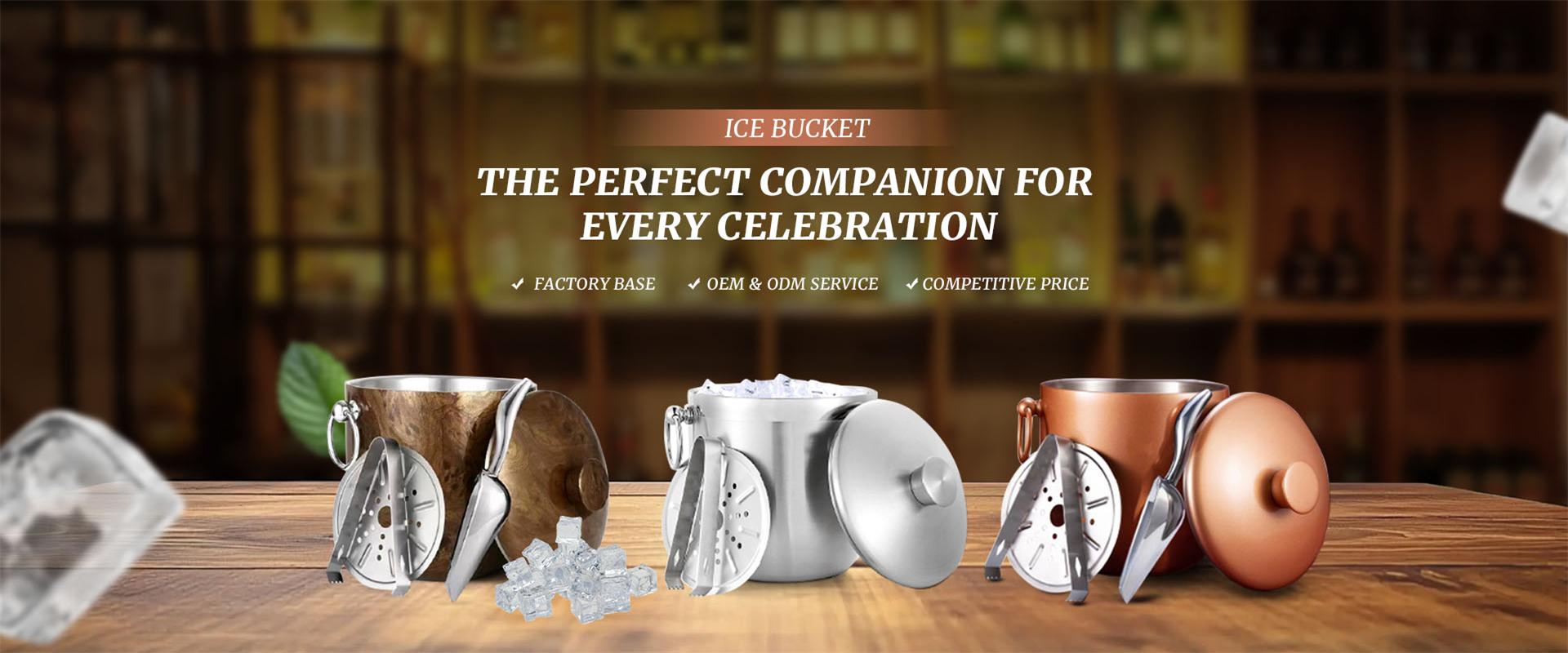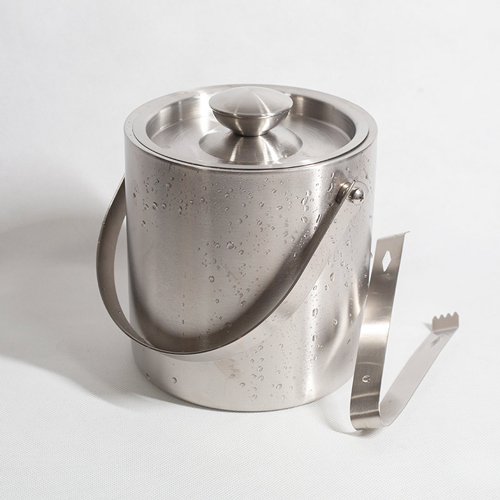Should I choose the ice bucket with lid?
I have often fought with warm drinks during lively evenings. Ice melting too soon ruined my mood. I needed a solution that truly kept my drinks chilled.
A lid on the Ice Bucket can extend cooling time and match specific needs in various settings. Read on to find the best choice for your occasion.
I started to wonder if a lid on an ice bucket would truly make a difference. I faced the hassle of melting ice during parties and was forced to add more ice constantly. I felt frustrated and disappointed. I wanted my drinks to stay cold for longer. I looked for answers and found that the type of bucket and its design can help address this challenge. I learned that a lid can slow ice melting if the right drinks and sizes are considered. I also realized that in some cases, an open design offers more flexibility. I still had doubts. My experience taught me there is no one-size-fits-all answer. I then decided to break down the problem with clear questions that matter to anyone who cares about chilled drinks.
How do you keep an ice bucket from melting?
I faced days when my ice buckets would lose their chill too quickly. I worried about wasted ice and ruined events.
The answer lies in using proper insulation, a lid, and by choosing the right size of the bucket. I found that simple steps, like pre-chilling your bucket and using ice made from purified water, help keep it colder.

I dug deeper into ways to reduce melting and discovered many tips that seemed too simple but worked well in real life. I learned that keeping an ice bucket from melting relies mainly on three aspects: insulation, covering, and pre-chilling. I studied several methods and realized that the design of the ice bucket matters greatly. For example, a bucket with thicker walls provides a slower heat transfer. I also noticed that using a lid helps trap the cool air inside and stops the warm air from entering. Furthermore, I experimented with pre-chilling the ice bucket in the freezer before use, and I witnessed a clear difference in performance. I even made a small chart to compare different approaches:
| Method | Benefit | Consideration |
|---|---|---|
| Insulated walls | Slows down heat transfer | Increased weight |
| Lid on the bucket | Traps cool air inside | Might not fit all drinks |
| Pre-chilling | Starts with a lower temperature | Requires extra time |
| Purified water ice | Melts slower than tap water | Extra cost for water |
I believe each of these steps has its own role to play. I see that when you combine them, the overall effect is powerful. This practical experiment allowed me to connect theory with real practice. I now understand that ice buckets can have a better performance if made using these basic principles. I use these methods at home and at events, and they have never failed me. I encourage you to try them out and see the difference.
How long does ice bucket last?
I questioned the shelf life of my ice buckets during peak party seasons. I did not want a bucket that gives out quickly.
I learned that a well-made, insulated ice bucket can last the cooling effect for several hours. I observed that factors such as ambient temperature and bucket design change the longevity.

I dove into understanding the factors that affect ice bucket longevity. I discovered that environment plays a big part in how long an ice bucket can keep its chill. I found that in cooler indoor conditions, a good insulated bucket with a lid can maintain the temperature for three to four hours in many cases, sometimes even longer. In contrast, during hot outdoor events, even the best bucket might only give a shorter period of time, around one to two hours. I noticed that the bucket’s thickness matters too. A thicker bucket holds cold longer. I also compared buckets made of different materials. I kept a small table for clarity:
| Factor | Impact on Longevity | Practical Tip |
|---|---|---|
| Ambient Temperature | Faster melting in heat | Use indoors or in shade |
| Insulation quality | Directly affects duration | Invest in quality design |
| Bucket material | Denser materials last longer | Consider stainless steel |
| Lid presence | Retains cool air effectively | Prefer lid-added buckets |
I realized that no product is perfect for every situation. I tested several types in my own gatherings. I now make clear choices based on where and how I use them. This detailed check helped me see that the answer can vary. I now enjoy my drinks and confidently pick the right ice bucket for each event.
What makes a good ice bucket?
I struggled to pick a bucket that could satisfy my need for functionality and style. I often ended up with a product that failed me during critical moments.
A good ice bucket must have strong insulation, durability, and a design that fits the event’s needs. In my view, a lid is a bonus if you plan to extend the cool time for larger drinks.

I spent time thinking about the qualities of an ideal ice bucket. I listed several features that matter to me. First is insulation—a top-quality ice bucket should have walls thick enough to slow heat exchange but still easy to handle. Second, the material is important. I prefer stainless steel for its durability and look. Third, a lid can prove useful to keep out warm air and prevent dust from landing in the drink. Fourth, the design should match the event. For example, a sleek design suits a formal party while a rustic look fits a casual family gathering. I also compared how different buckets work using this simple table:
| Feature | Why It Matters | My Experience |
|---|---|---|
| Insulation | Maintains temperature longer | Prolonged cooling effect |
| Material durability | Withstands repeated use | Lasts for years |
| Design flexibility | Matches event themes | Enhances presentation |
| Lid versus open design | Affects cooling time and accessibility | Crucial based on drink size |
I remember one party where I used a premium insulated bucket with a lid. The drinks stayed cooler for much longer than usual. I also recall a casual get-together where an open bucket was easier to use with varied bottle shapes. My experience tells me that the best ice bucket is one that is chosen according to the specific needs of the event. I believe this method helped me become a better host. I now confidently rely on these simple factors when making my choice.
What drinks can I put in an ice bucket?
I often wondered if I should use the ice bucket only for bottled drinks or if I could cool other types too. I had a hard time choosing what to serve at my events.
I found that most drinks, from bottled wine to assorted soft drinks, can be chilled in a suitable ice bucket. I noticed that a bucket with a lid is best when you have a mix of drinks that require longer cooling times.

I dug into the details of which drinks work best with different ice bucket designs. I examined many types of beverages. I learned that bottles like wine and champagne benefit from a consistent low temperature. I noticed that canned beverages and sodas also stay cool if the bucket holds enough ice. I found that in large events, you might want to serve cocktails or specialty drinks. I studied the behavior of these drinks in different buckets. I even set up a simple guide for my use:
| Drink Type | Ideal Cooling Method | Bucket Choice |
|---|---|---|
| Bottled Wine | Consistent chill | Insulated bucket with lid |
| Champagne | Slow temperature loss | Well-designed metal bucket |
| Sodas & Cans | Quick access criterion | Open bucket for variety |
| Mixed Cocktails | Rapid cooling | Bucket with flexible opening |
I recall trying out this method during a family celebration where I used a lid bucket for wine and an open bucket for mixed drinks. I saw that each drink responded well based on how I planned the setup. What I learned is that the type of bucket should match the presentation of the drinks. My personal trials and many observations help me decide which bucket to use. I now have a clear idea about how to choose the ideal bucket type for each drink, ensuring everyone enjoys a proper chill every time.




